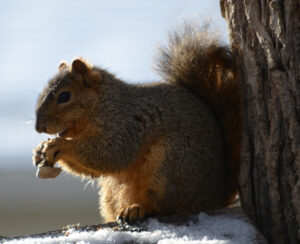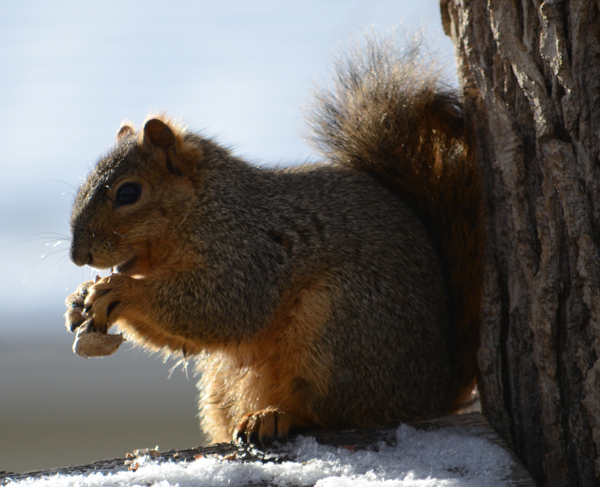While many of us understand how to care for dogs, cats, birds, and reptiles, there are a few other pets people care for that are not so known. Sometimes these pets are referred to as “alternative pets.” In this post, we help to shed light on how to care for 3 unique and alternative pets that some people choose to keep. Some of these pets may seem strange at first, but, once you get to know them they are sure to steal your heart.
This post is for informational purposes only. Possession of these alternative pets may or may not be legal in some municipalities. Also, be aware that alternative pets require different care and needs that “normal” pets don’t, so don’t rush into life with these pets without doing your own research first.
Alternative Pet 1: Pygmy Goats

Pygmy goats are typically perceived as farm animals only used to produce milk and other dairy products. Nothing could be further than the truth! Pygmy Goats can make wonderful companions and their intelligence is comparable to that of your ordinary canine. Pygmy goats are relatively easy to care for as well. And they are generally very easy to bond with as their temperament is mild and playful.
Pygmy goats can adapt to almost any climate from hot and humid environments to cold and desolate places. These goats, however, can exhibit a very musky odor so keeping them in your home with you may not be the best idea. Pygmy goats thrive when they have enough room to run, jump, and play. A medium to large yard will provide plenty of room for these activities. Pygmy goats can live upwards of 15 to 20 years so plan on having them around for awhile. Many agricultural retail stores sell goat food specifically formulated to keep them healthy and happy. They need a constant and continuous supply of fresh water. Be warned, however: goats are known to eat and chew on almost anything to be sure to keep valuable possessions out of their reach.
Alternative Pet 2: Sugar Gliders

Sugar gliders are often confused as “flying squirrels,” but they are not rodents but rather marsupials. And, just like flying squirrels, they are able to “glide” from one high perch to another via their gliding membranes stretched between their fore and hind legs. Sugar gliders can live up to 15 years and, like pygmy goats, possess an intelligence level comparable to your average dog. Sugar gliders are also extremely clean animals that constantly groom themselves and have almost no noticeable odor. Sugar gliders are known to form strong bonds with their human owners and exhibit unique personalities.
Caring for a sugar glider consists of providing them with enough room to climb, play, glide, and roost. Their cage need to be appropriate for their age and as they grow, their living accommodations should as well. Many pet stores offer specially formulated food for sugar gliders and many times it can be purchased online. As for potty training, there isn’t any so be sure to be on the lookout for “accidents” while they are allowed to roam free. Sugar gliders also don’t need vaccinations as they are not prone to diseases and parasites that cats and dogs can get.
Alternative Pet 3: Squirrels

Normally, squirrels cannot be purchased as a pet at any pet store or in Craigslist classified as they are wild animals. Remember, squirrels are not “pets.” Queen City Petsitting does not endorse or condone keeping squirrels as pets. Most times, squirrels that are orphaned are rehabilitated by humans before they are returned to the wild. If you find yourself in the position to care for a baby squirrel, the best thing to do is contact animal control or an animal sanctuary to determine the best course of action. Never, under any circumstance, seek out a baby squirrel to make a companion for yourself. Squirrels are best left in the wild where they belong.
So why are squirrels included in our “alternative pets” blog post? The answer is simple: if you ever do have the opportunity to raise a baby squirrel from birth to adulthood in a rehabilitation setting, squirrels are among the rewarding animals to interact with. About 10 years ago, I found an abandoned baby squirrel crying and hanging from a branch in the tree in my yard. It was so small that it didn’t have any hair yet and its eyes were still closed. After multiple failed attempts to reunite it with its mother, I researched what I should do with it. My calls to animal control were never returned so I decided to see hat I could do for the poor animal. After much research online, I was able to find care instructions that would allow me to raise the baby and prepare it for release into the wild. Here is how I cared for the squirrel:
- Using a dropper, I fed the baby squirrel a 1:1 mixture of sweet whipping cream and Esbilac puppy milk replacement formula. The whipping cream is high in fat which is what these fast growing animals need. The feeding schedule for 3 months was once per 3 hours throughout the day and night. Needless to say, I didn’t get much sleep during those 3 months.
- After every feeding, I had to use a cotton ball soaked in warm water to “stimulate” potty time. While it seems weird, it is necessary because the in the wild, the mother squirrel will lick the baby’s bum to help it go potty. This must be done after each feeding because if the baby doesn’t potty, then the risk of sickness and death can increase. Babies need to potty, so understand that this is a highly important part of feeding time. Feeding takes about 20 minutes, on average.
- Squirrels need a dark place to hide and sleep. Also, they need a cage that cannot be accessed by your other household pets.
- Baby squirrels will open their eyes at about 5 weeks old. Just like most baby animals, they will “imprint” with their “mother” when they do. Should you be the one they imprint with, you will be known to the baby squirrel as its mother.
- When the squirrel is about 3 months old, it will be ready for solid foods. Introduce raw almonds, walnuts, sunflower seeds and grains. Never use foods flavored with salts, sugars, and seasonings. High protein small rodent feed should be supplemented with fruits such as raisins and other dried, non-sweetened fruits. Make sure fresh water is always available.
- Squirrels are extremely playful. They will wrestle with you, climb all over you, and even take naps on you. Be aware, however, that these animals are built to climb trees and their claws are very sharp. Wear long sleeves and thick gloves when handling them.
- Squirrels are wild. They cannot be potty trained and the risk of bites is real. Never reach your hand into their sleeping boxes while they are in it and never grab at them. Letting the squirrel do its own thing is the best way to interact with them.
- At about 6 months old, it will be time to introduce them to the outside world. I placed my squirrel’s cage outside every morning with the door open to allow it to explore the world around it. It took about a week of doing this for the squirrel to understand that it was free to go. At first, it wouldn’t leave its cage. But eventually it took to its new environment and finally left for good.
Alternative Pets – Love From The Unexpected
Should you find yourself sharing your life with any of these animals, you will experience an opportunity unlike any other. Make sure to do your research before you commit to these animals. Each one has its own needs and requirements and not everybody can meet the challenge. Know what you’re getting into and refer to your veterinarian if you have any questions about these animals.
Pygmy Goat Image Credit – Kevin Payravi – Own work, CC BY-SA 3.0, Link
Sugar Glider Image Credit – Dawson at English Wikipedia – Own work, CC BY-SA 2.5, Link
Squirrel Image Credit – By Mariappan Jawaharlal – Own work, CC BY-SA 3.0, Link

